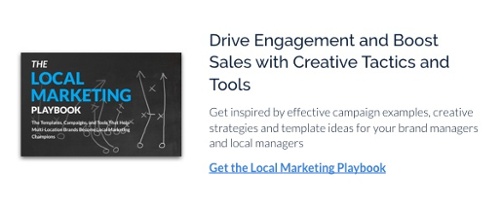As designers and brand marketers, the importance of brand consistency is drummed into us as an article of faith.
We devote hundreds of hours and tens of thousands of dollars to developing brand guidelines that will ensure consistency. We agonize over logos, colors, typography, and layouts. We codify these rules in brand books and binders. We spend thousands more distributing these masterpieces to staff and partners.
And all that work often sits unused on shelves.
How do I know this? Because I just watched it happen in my own organization.
That’s right. In a company that builds software to protect brand integrity, the violation of our brand guidelines began the very day we published them. In fact, I have seen our brand guidelines book used as a mouse pad more often than I have seen it govern our communications.
And the reason for this failure—infuriating as it must be to the talented and hard-working designers who created our guidelines—is simple. The guidelines never made it across what I think of as the blood-brain barrier in the organization: the gulf between brand-design professionals and the rest of us.
It’s not that staffers think brand consistency is unimportant. It’s just that brand consistency turns out to be less important than whatever else we’re trying to get done at the time. Win a new client. Solve a customer problem. Save the company money. Make the company money. Whatever it is, it’s urgent—and if brand consistency gets in the way, then consistency gets left on the cutting-room floor.
If you accept this basic fact—that brand consistency is the most important thing except for everything else—then as a brand marketer you have two options. You can try to enforce consistency by becoming a brand cop (good luck with that). Or you can try to weave the brand into the fabric of your organization so deeply and seamlessly that consistency occurs without staffers even thinking about it.
To say it more simply: You can try to impose brand-consistency rules. Or you can give your colleagues brand consistency tools.
The Signs and Symptoms of an Inconsistent Brand
How can you tell if your brand has a problem with inconsistent execution? Any one of the symptoms described below could be a hint that brand consistency isn’t where you need it to be.
- Low brand awareness relative to competitors or outbound spend level. When your brand is executed inconsistently, If your campaigns are on the low end of category norms, you may want to run a study of brand awareness to understand if people recognize your brand when they see it, and have a good sense of what it stands for.
- Dissatisfaction among dealers, resellers, retailers and franchisees. Your downstream marketing partners depend on the brand to help them sell effectively, so may express some angst if the brand isn’t providing the lift to their business they expected when they signed on. Of course, in many cases, (see Section 3 of this whitepaper), these local marketers are both the cause and the victims of brand inconsistency. But your job isn’t to point fingers; it’s to identify the source of the problem and solve it as fast and effectively as you can.
- Elevated production costs due to rework or production errors. Although this is often the smallest effect financially (brand awareness deficiencies being huge by comparison), production errors are often the trigger for an evaluation of brand consistency and marketing operations generally.
- Decreased marketing activity, especially in field or vertical markets. When something is difficult to do safely and effectively, people tend to avoid trying in the first place. This is where brand consistency problems become corrosive—creating a kind of downward spiral from which it can be difficult to emerge.
Clearly, the problem of brand consistency can have a major impact. Let’s find out now what you can do to address the problem at its source—and solve it for good.
Where to Begin Your Brand Consistency Journey?
Start with the document types that staffers produce most often. In nine out of ten organizations, that’s email—so let’s begin there.
Email Signature Design
Creating a branded email signature is the fastest and easiest way to increase the number of brand-consistent impressions your company makes. A well-designed email signature elevates pride, improves morale, and encourages greater formality and attention to detail in a medium that is famously prone to error.
When designing the brand email signature, keep in mind two basic use cases: the appearance of the signature when the recipient is viewing with images turned off and with images turned on. Does the signature deliver a good brand impression in both cases? Does the choice of font (usually, serif versus non-serif is about all you can control) help to support your brand typography? Have you specified color in a brand-consistent way? And finally, have you handled crucial editorial details—titles, designations, etc.—in a manner that’s compliant with your guidelines?
As you consider your email signature strategy, take care not to rush into a one-signature-fits-all approach. Finance and Admin might need a signature that conveys phone and physical address information. Marketing and Sales may need to incorporate web addresses and social media links. Before settling on a standard, or standards, walk the halls and ask people from various departments to share with you their signatures first. You’re looking for as many different use cases as you can find, and then building the smallest number of solutions you can while keeping all those different needs in mind.
It’s important in this process to adopt a mobile-first (or at least a mobile-equal) mindset. Use the constraints of the mobile environment to define your standard signatures. If space limitations may inhibit long titles, take care to think about how titles might break across lines. The more problems your design anticipates, the higher the adoption rate will be.
Rolling Out The Email Signature Approach
If your organization has fewer than 100 staffers, you can likely establish consistency in email signatures manually. Create each type of signature yourself, and insert these into a document from which they can be copied and pasted. Provide clear instructions on formatting an email signature; you might be surprised how much trouble users can have with this process. Add a tutorial video to the document and monitor the number of views it receives; resend the email as a reminder every 2-3 days until the number of views equals more than 25% of your audience. Finally, ask every employee to send you an email after they have configured their signature, and provide feedback on how they’ve done
If your staff/partner community runs larger than 50-100, consider implementing a centralized signature-management tool like one of the vendors listed below. Pricing will run from $1-2 per user per month, typically, but your ability to simplify execution and drive user adoption will be well worth it.
If you need to make the case for the business value of an email signature program, try a media-planning perspective. Multiply the number of employees by the average number of emails sends per year. This yields the total number of brand impressions your email signature program will deliver. Next, divide the number by 1000. Divide this result by the annual subscription fee for your email signature system, and you’ll have your cost per thousand or CPM. If the number is under $5, you’ve probably got a good case.
Office Documents
When it comes to the business documents that your staffers and partners produce every day, your aim is brand consistency by default. To achieve this, most designers will create Microsoft Word and PowerPoint template documents, and then distribute these documents on the company intranet or extranet.
There are two problems with this approach. Most people forget to download the templates. And even if they do, they tend to misplace the templates and just fire up a “Blank” document instead. So, when the time comes to create a document (remember that users are in a hurry and brand consistency is expendable), users will start with a blank new document and then do their best to achieve brand consistency on their own.
A better way to maximize brand consistency is to make sure the Microsoft Word “blank” document is brand-consistent by default. And the good news is, you can, by modifying a document called Normal.dotm. You’ll find a decent set of instructions here.
Once you have created a brand-consistent Word Normal template and installed it in place of the factory-delivered Normal.dotm, you’ll need to distribute it to your staffers and partners, with instructions for installing it on Windows and Macintosh computers. Depending on your organization, you may need to collaborate with your IT department and talk to them about installing Word template files as part of their provisioning and on-boarding of new employees.
PowerPoint
Naturally, you’ll want to take the same approach with PowerPoint, so that when users click “New Presentation” they’ll begin with brand-consistent colors, fonts, and logos. To do that, you’ll find instructions for various versions of PowerPoint here.
Advanced Brand Consistency
Once you’ve got your internal brand-consistency basics covered, it’s time to start thinking further afield. For example, you may have a dealer network or franchisee community that needs to activate the brand in local or vertical markets. Or, you might have a distributed sales force that, while part of the same corporate entity, operates in a highly independent manner.
In both cases, you face a significant challenge from a brand consistency perspective. These communities are often extremely limited in their access to marketing and design software. They often lack formal training in marketing and branding and so may not even recognize when execution doesn’t measure up from a brand consistency point of view. Finally, like internal stakeholders, distributed marketers are often time and resource-constrained, making their commitment to brand consistency tenuous at best.
For all these reasons, if your distributed marketing community exceeds even a few dozen locations, you’re probably facing one of two pressing problems: Either your distributed marketers are creating marketing executions outside of your view, inflicting untold damage on brand consistency and equity. Or, they are inundating you and your central marketing team with one-off requests that keep you from focusing on the strategic insights and programs where you can add the most value to the brand.
If these problems ring a bell for you, it’s time to start thinking about putting a distributed marketing platform in place.
According to the experts at Forrester Research, distributed marketing platforms “provide a modular, marketer-friendly way to manage money, people, content, and brand strategy.” Phrased a bit more concretely, a DMP enables you to deliver just the right templates, images, and text content to the right marketing partners at just the right time for them to activate your brand in their markets consistently and effectively.
It’s common to think that a Distributed Marketing Platform is just another term for a Digital Asset Management (DAM) system. But in fact, a DMP incorporates a DAM’s ability to deliver or distribute assets, and adds the ability for distributed marketers to customize and recombine assets to meet their local needs, always operating within clearly articulated brand guidelines and rules. By doing so, a DMP like CampaignDrive solves the problem of constrained resources, software, and skills at the edge of your marketing network, by transforming the notion of static assets, where appropriate, into dynamic, customizable marketing tools.
It stands to reason that DMPs will raise significant questions for brand designers about the degree to which local customization is compatible with the goal of brand consistency. The answer to that question is that a good DMP will empower the brand to exert precisely the level of control it needs over each type of document and with each kind of user community, to achieve the optimum balance of brand consistency, user-friendliness, and production efficiency.
To achieve and maintain this balance, look for the following in your DMP.
- A highly visual, “drag-and-drop” customizing studio. Users today tend to be highly visual and want to see the effects of their edits in real time. This helps to accelerate document production, minimize mistakes, and elevate user satisfaction and adoption—the number one factor in ROI.
- A site architecture that’s based on the unique practices of your brand. Users today are willing to live within brand rules, provided the brand tools are easy to find and easy to use. Make sure your DMP allows you to architect your system and organize templates and assets in ways that are naturally intuitive to you and your users in the field. And make sure that you can fine-tune the search experience to make your assets as easily discoverable as possible.
- A Content Database that saves keystrokes and prevents errors. Most users today want to combine the right degree of freedom with fast, accurate document customization. They want content tailored automatically to their needs, and to be able to select between different creative executions, based on their understanding of their local market. Make sure your DMP has the ability to serve up these options in an intuitive, point-and-click manner.
- A one-stop shop for all marketing materials—traditional and digital alike. Local marketers today have to contend with a more complex marketing mix than ever before. So your DMP needs to make their lives easier by combining all the most common tactics under a single login and a single user experience.
Maximizing Return on Brand Integrity
All of the values we’ve discussed in this blog post—greater brand awareness, marketing agility, increased production efficiency—are positive, of course. But to make a compelling case, it’s important to move from an abstract understanding of these values to a concrete estimate of the impact they can have on your bottom line. To help you gain that sharper focus, the CampaignDrive team has assembled an ROI calculator for DMP. Located here, the ROI calculator allows you to define your user community and existing marketing workflows and volumes, to arrive at a realistic estimate of what you might invest in a DMP, and what you could experience in terms of payback times and ultimate ROI.
Achieve Brand Consistency with CampaignDrive by Pica9
At Pica9, we understand the challenges that multi-located brands face when it comes to maintaining a consistent brand. CampaignDrive by Pica9 is a brand management platform that allows critical brand elements, like logos, to be locked down, while allowing for customization of certain elements at the local level. See just how easy CampaignDrive can make executing beautifully brand compliant, successful marketing campaigns.






